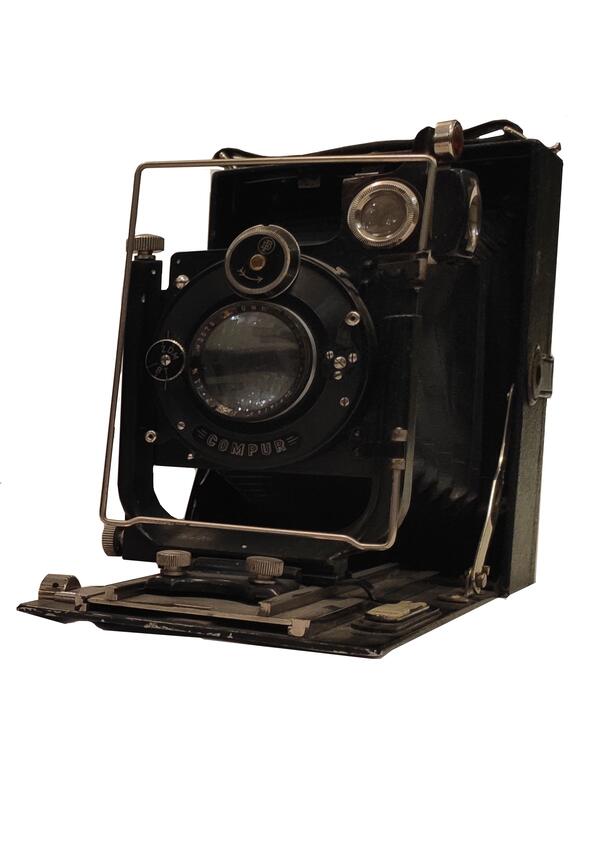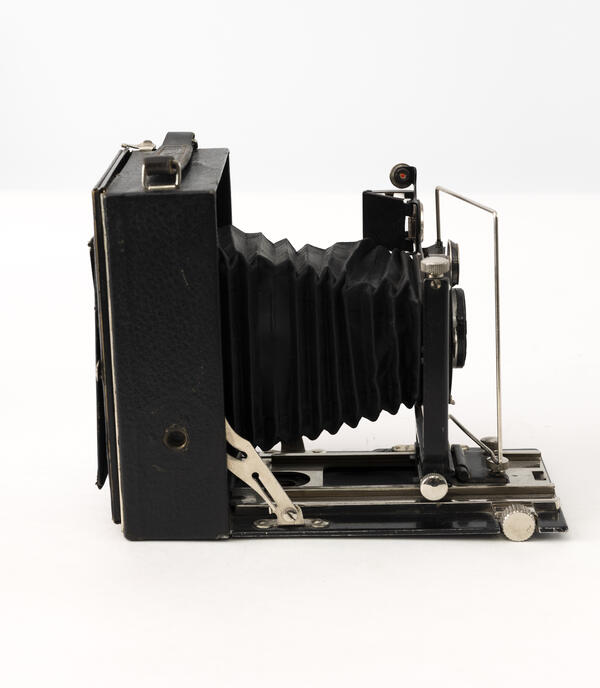The Fotokor-1 camera from the collection of the Zlatoust City Museum of Local Lore is one of the first Soviet mass-produced cameras. Before it came along, the Moscow artel named Phototrud began to produce small quantities of the EFTE camera in 1929.
The production of the Fotocor-1 began a year later, in 1930. The equipment was produced at the Leningrad State Optical Mechanics Plant named after the OGPU until the 1940s. Throughout those 11 years, the plant produced over one million items. This camera can be considered the first mass-produced one.
It was a folding camera with frame and corner viewfinders and a double extension of the pyramidal bellows. The camera had a black casing, and the Ortagoz 4.5 / 135 lens (sometimes Industar-2 4.5 / 135) moved along the guide rails. The set included five plate-holders for glass plate negatives measuring 9 by 12 centimeters.
The camera had manual focus and featured shutter and aperture settings. It weighed just over one kilogram. The shutter was developed by Soviet engineers based on the German shutter Vario. The camera came with a tough leather case.
Photographers used such a camera during interior shooting with a tripod and in any other circumstances, even when it was not possible to adjust the lighting. The Fotokor-1 was regularly used for making photo reports of the Great Patriotic War.
Before the war, in 1938, a modification called Fotokor-3 was developed. It was a reduced copy of the first camera with an Industar-7 3.5 / 105 lens, however, it was never mass-produced.
This exhibit belonged to a Soviet commander, a strategist, Marshal of the Soviet Union and a Zlatoust native Boris Mikhailovich Shaposhnikov. He used the camera right until his death in February 1945. The Fotokor-1 camera was donated to the Zlatoust City Museum of Local Lore by Marshal’s son, Lieutenant General, and Doctor of Military Sciences Igor Borisovich Shaposhnikov in 1982.
The production of the Fotocor-1 began a year later, in 1930. The equipment was produced at the Leningrad State Optical Mechanics Plant named after the OGPU until the 1940s. Throughout those 11 years, the plant produced over one million items. This camera can be considered the first mass-produced one.
It was a folding camera with frame and corner viewfinders and a double extension of the pyramidal bellows. The camera had a black casing, and the Ortagoz 4.5 / 135 lens (sometimes Industar-2 4.5 / 135) moved along the guide rails. The set included five plate-holders for glass plate negatives measuring 9 by 12 centimeters.
The camera had manual focus and featured shutter and aperture settings. It weighed just over one kilogram. The shutter was developed by Soviet engineers based on the German shutter Vario. The camera came with a tough leather case.
Photographers used such a camera during interior shooting with a tripod and in any other circumstances, even when it was not possible to adjust the lighting. The Fotokor-1 was regularly used for making photo reports of the Great Patriotic War.
Before the war, in 1938, a modification called Fotokor-3 was developed. It was a reduced copy of the first camera with an Industar-7 3.5 / 105 lens, however, it was never mass-produced.
This exhibit belonged to a Soviet commander, a strategist, Marshal of the Soviet Union and a Zlatoust native Boris Mikhailovich Shaposhnikov. He used the camera right until his death in February 1945. The Fotokor-1 camera was donated to the Zlatoust City Museum of Local Lore by Marshal’s son, Lieutenant General, and Doctor of Military Sciences Igor Borisovich Shaposhnikov in 1982.







